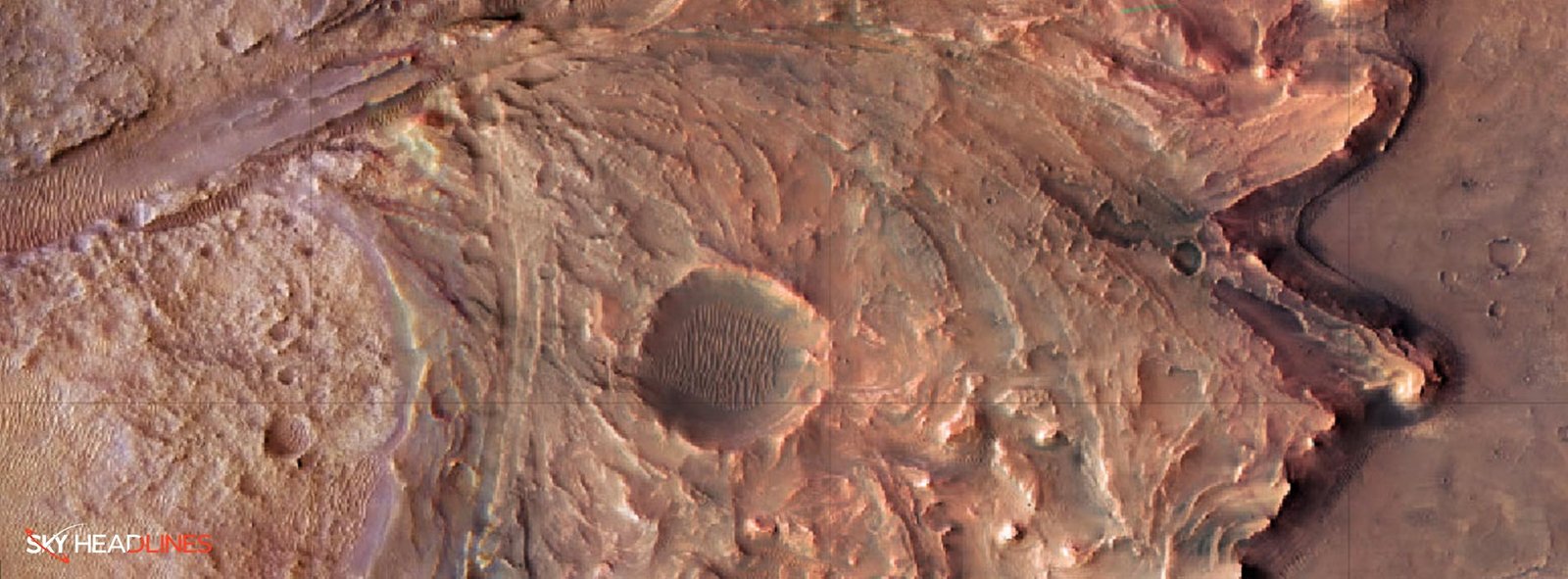News:
Let’s take a deep dig into the recent research, and Mars exploration by NASA!
Recent Mars Research & Development:
If you are wondering what is the latest news of Mars 2023, then let us unveil the crisp news for you. Scientists did a recent discovery in which they found that ancient bacteria on Mars can endure near-surface conditions for significantly longer durations than previously estimated.
Aside from this, let’s have a look at other recent findings that have also been collected in the Mars research paper.
The center of Mars and its liquid core has been the subject of a captivating new study, shedding light on the planet’s formation and evolution. The research, which was initially planned to span just over one Mars year (equivalent to two Earth years), produced remarkable findings.
And despite the challenges posed by Martian storms as the Mars temperature is very high, which accelerated dust buildup and limited power to the NASA Mars lander, NASA extended the mission.
This extension allowed for the continued collection of geophysical data, including signals of mars-quakes, until the conclusion of last year.
Mars Research Station Utah:
The names of places on Earth, explorers, and even cartoon characters may be found on Martian maps.
The Perseverance rover of Mars NASA is now studying rock outcrops at the rim of Mars’ Belva Crater.
NASA’s Curiosity rover recently dug a sample 2,300 miles (3,700 kilometers) distant at a place known as “Ubajara.” The crater has an official name, but the drill site is known by a nickname, hence the quotation marks.
Both names are among dozens used by NASA missions to describe not just craters and hills, but also every boulder, pebble, and rock surface studied.
Mystery Behind Selecting This Name:
Project scientist for the Curiosity mission at NASA’s Jet Propulsion Laboratory in Southern California, Ashwin Vasavada, explained that the main rationale for selecting all of these names was to make it easier for the crew to keep track of what they are discovering every day. Later on, we can refer to the many hills and rocks by name as we discuss them and eventually document our discoveries.
The method by which scientists generate identities has developed from the early days, 25 years ago, when they employed cartoon character names. Take a closer look.
What are the Official Titles That are Given to Mars Research?
The International Astronomical Union (IAU), a scientific body, has approved official names, therefore it seems simple to distinguish between an official and an unofficial name on Mars. The IAU establishes naming guidelines for planetary features and records them in the Gazetteer of Planetary Nomenclature.
For example, when it comes to craters on celestial bodies on mars surface, if a crater is bigger than 37 miles (60 kilometers) in diameter, it gets named after famous scientists or science fiction writers. However, if a crater is smaller than that, it gets named after cities with populations of less than 100,000 residents. Perseverance has been studying Jezero Crater, which is named after a Bosnian town. Belva, an impact crater within Jezero, is named after a West Virginia town, which is named for Belva Lockwood. It is suffragist who campaigned for president in 1884 and 1888.
Why the Official Names of Findings in Mars Research has been Replaced?
Early Mars missions’ nicknames were occasionally quirky, even employing cartoon character names. The unofficial titles “Yogi Rock,” “Casper,” and “Scooby-Doo” were among many given to NASA’s first rover, Sojourner, in the late 1990s.
With the Spirit and Opportunity rovers, whose crews began choosing more purposeful names, the mentality shifted. The Opportunity crew, for example, dubbed a crater “Endurance”.
After the ship that transported explorer Ernest Shackleton’s ill-fated mission to Antarctica. Curiosity and Perseverance are named after science-fiction writers Ray Bradbury and Octavia E. Butler, respectively.
The InSight team called a boulder jostled by the lander’s retrorockets during touchdown “Rolling Stones Rock,” after the rock band. In addition, the Curiosity crew named a Martian hill after Rafael Navarro-González, a colleague who died from COVID-19 problems.
Why is There So Much Research on Mars?
You will be surprised to know that thousands of research has been made on Mars. so let’s find out the reasons, by looking at the recent missions.
Mars research center Toronto, Canada has launched recent missions.
The Curiosity and Perseverance missions, with a few exceptions, keep to nicknames based on terrestrial locales.
Curiosity’s crew generated a geological map of the landing location before the rover landed in 2012. They started by laying out a grid with quadrants or squares that were each about 0.7 miles (1.2 kilometers) in size.
These quadrants would be based on a geologically significant location on Earth.
Then, as today, team members proposed topics based on places where they have worked or have a personal connection, and they informally debated which would be the most fascinating to add, bearing in mind that different names would be commemorated in future scientific articles.
Curiosity and Perseverance:
After selecting a topic, hundreds of names that suit that theme are compiled. That many are required because the available names can rapidly run out, considering that Curiosity may spend many months in a quadrant.
Curiosity’s newest quadrant was named after Roraima, Brazil’s northernmost state, and Mount Roraima, the tallest peak in the Pacaraima Mountains, which are located near the borders of Venezuela, Brazil, and Guyana.
This was the first quarter theme from South America. The sulfate-rich area Curiosity is presently investigating, with its flat-topped hills and steep slopes, reminded them of the Pacaraima range’s “tabletop” mountains.
Scientists picked national park themes for Perseverance. The rover is presently investigating the Rocky Mountain sector and has recently drilled into rocks at a place known as Rocky Mountain National Park’s “Powell Peak.”





